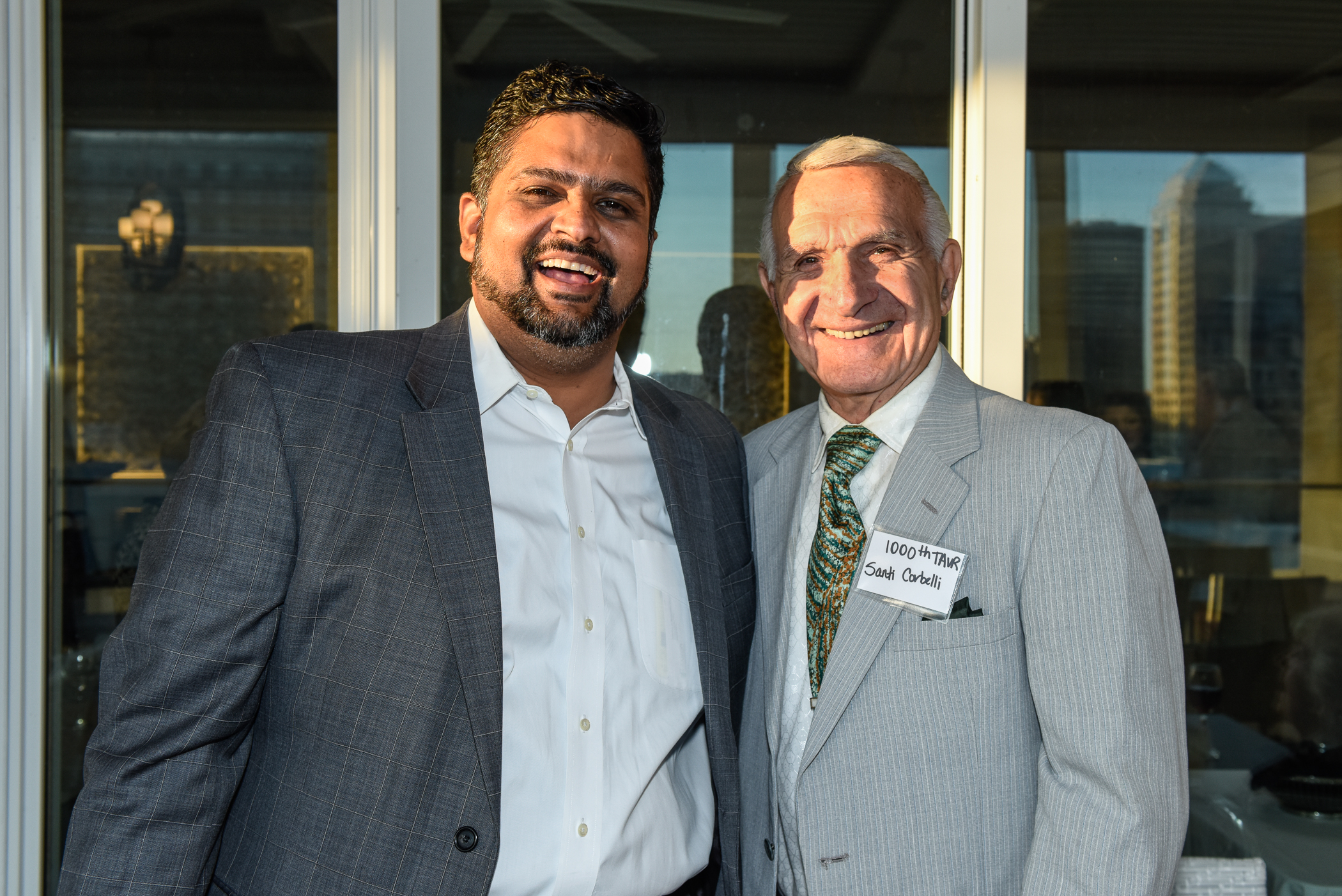Meet GVI’s 1000thTAVR Recipient
Santi Corbelli is 87-years old and doing better than ever
By Annette Pinder
Gates Vascular Institute (GVI) has successfully completed its one thousandth transcatheter aortic valve replacement (TAVR), a minimally invasive procedure that delivers a fully collapsible replacement valve to a damaged heart valve site. The 1000thpatient is 87-year-old war veteran Santi Corbelli of Williamsville, who was able to leave the hospital one day after the procedure. Incredibly, Mr. Corbelli, the uncle of Drs. John and Rick Corbelli of the VA Medical Center in Buffalo, still works as a barber and recently competed in the Senior Olympics. He says that he feels better than ever and that the daily fatigue and chest pain that kept him from enjoying life is no longer an issue.
GVI is recognized locally and internationally for its cutting-edge technology and innovative therapies in treating patients with aortic stenosis, which is a narrowing of the heart valve. Vijay Iyer MD, PhD, FACC, FSCAI, medical director of cardiology and director of the Structural Heart Program at Kaleida Health, performed the procedure. Dr. Iyer explains that, “Aortic stenosisoccurs when the aortic valve narrows or fails to open and close properly, forcing the heart to work harder and harder. The extra stress causes the heart’s muscles to weaken over time, increasing the risk of heart failure.”
According to the American Heart Association, more than five million Americans are diagnosed with heart valve disease each year, and up to 1.5 million suffer from aortic stenosis. In Western New York there are about 75,000 cases, and with an aging population those numbers will continue to grow. Approximately 50 percent will not survive more than two years without valve replacement following onset of symptoms, which can include chest pain, shortness of breath, dizziness, and fainting.
TAVR is FDA-approved for patients with symptomatic aortic stenosis and for whom standard valve replacement surgery poses an intermediate or high risk. The procedure involves entering a patient with a catheter through the femoral artery in the groin, also known as the transfemoral approach, to place the replacement valve near the damaged valve site, however alternate approaches can be used.
“Transcatheter aortic valve replacement is rapidly becoming the method of choice for valve replacement in patients who are at intermediate or high risk for traditional surgical aortic valve replacement. It has also shown tremendous promise in patients who are at low risk for aortic valve replacement. Being a high-volume facility, GVI is in a unique position to offer TAVR to all categories of patients with severe aortic stenosis,” said Dr, Iyer.
The quality of life improvements for symptomatic patients has been dramatic and sustained. “Eligible TAVR patients can expect a less invasive procedure, significantly faster recovery time and shorter hospital stays than for traditional surgical valve replacement. It’s amazing to see the dramatic improvement in quality of life for our patients.”
Gates Vascular Institute is one of the highest volume centers for TAVR in the U.S. and is also a TAVR training facility for physicians and industry personnel around the world. For more information, or to schedule an appointment to be considered for TAVR, call 716-859-2401.











